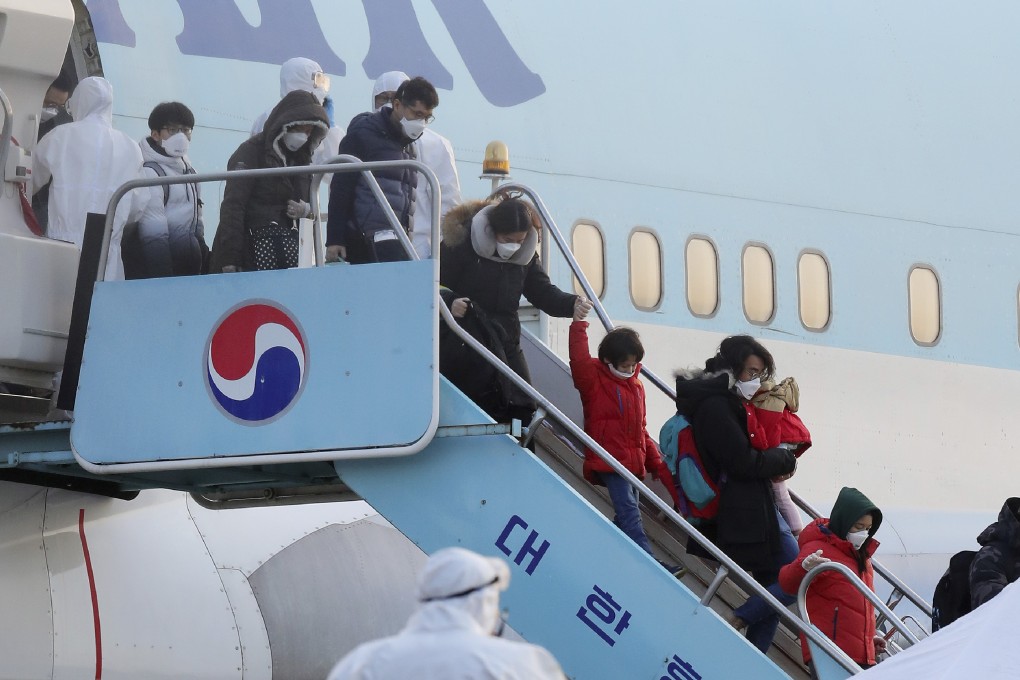Coronavirus: South Korea, Thailand confirm cases of human transmission
- 11 new cases emerged after 368 South Koreans were evacuated from Wuhan to two facilities in Asan and Jincheon, cities about 80km south of Seoul
- A Thai taxi driver is the first confirmed case of person-to-person transmission of the coronavirus inside the country

South Korea and Thailand have also confirmed cases of human-to-human transmission, as four individuals contracted the virus without travelling to China, according to Seoul and Bangkok’s health officials.
In Seoul, one of them was a man in his 50s who developed symptoms after dining with South Korea’s third confirmed patient at a restaurant in the capital.
The first patient to contract the virus inside Thailand was a local taxi driver, said Tanarak Pipat, deputy director-general of the Department of Disease Control.
“The Thai person who got infected does not have a record of travelling to China and it is likely that he was infected from a sick traveller from China,” Tanarak said.
The taxi driver was one of five other coronavirus cases confirmed in Thailand on Friday.